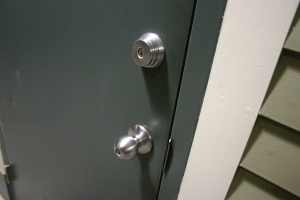Part 1
Are you thinking about becoming a locksmith? A good place to start is with residential locksmith work.
 The most common customer request is a house re-key. You need to be familiar with the type of locks involved in a house re-key. On houses of low to mid ranged quality, you will commonly find EZ set, Yale, Callin, Defiant, and Kwikset. These brands are all compatible with the Kwikset key, and the KW1 (Kwikset style key blank) is accepted by most home locks. If you encounter a Schlage lock, however, it has it’s own proprietary keyway, known as an SC1. You may also see a Weiser lock, which also has its own proprietary keyway. When re-keying most homes, it’s a good idea to bring all three key blank types, SC1, Weiser, and KW1. These key blanks are sold by most locksmith supply companies in around 30 cents each when you buy in lots of 50. For customers, you can charge between $1.50 and $2.50 per each key copied.
The most common customer request is a house re-key. You need to be familiar with the type of locks involved in a house re-key. On houses of low to mid ranged quality, you will commonly find EZ set, Yale, Callin, Defiant, and Kwikset. These brands are all compatible with the Kwikset key, and the KW1 (Kwikset style key blank) is accepted by most home locks. If you encounter a Schlage lock, however, it has it’s own proprietary keyway, known as an SC1. You may also see a Weiser lock, which also has its own proprietary keyway. When re-keying most homes, it’s a good idea to bring all three key blank types, SC1, Weiser, and KW1. These key blanks are sold by most locksmith supply companies in around 30 cents each when you buy in lots of 50. For customers, you can charge between $1.50 and $2.50 per each key copied.
Kwisket has a new lock you might see when re-keying homes. They designed this new key to be re-keyable by homeowners, but not many homeowners try to re-key these themselves. Chances are you will still get called for these jobs.
To service these locks, simply:
- Insert the old key and turn it a quarter-turn clockwise.
- Insert the change tool
- Remove the change tool
- Remove the old key
- Insert the new key
- Return key to original upright position
Following the steps, it can take as little as 10 minutes to key a 3 or 4 door house. A similar lock is also available from Schlage.
Part 2 is coming soon, in which we will look at more expensive homes and the locks they typically use. You can find more information on rekeying and a host of other locksmith subjects by checking out “The Dollar a Minute” Locksmith, A Step-by-Step Business Plan For Earning Part-Time or Full-Time Income Re-Keying and Repairing House Locks” by David Calvin.

